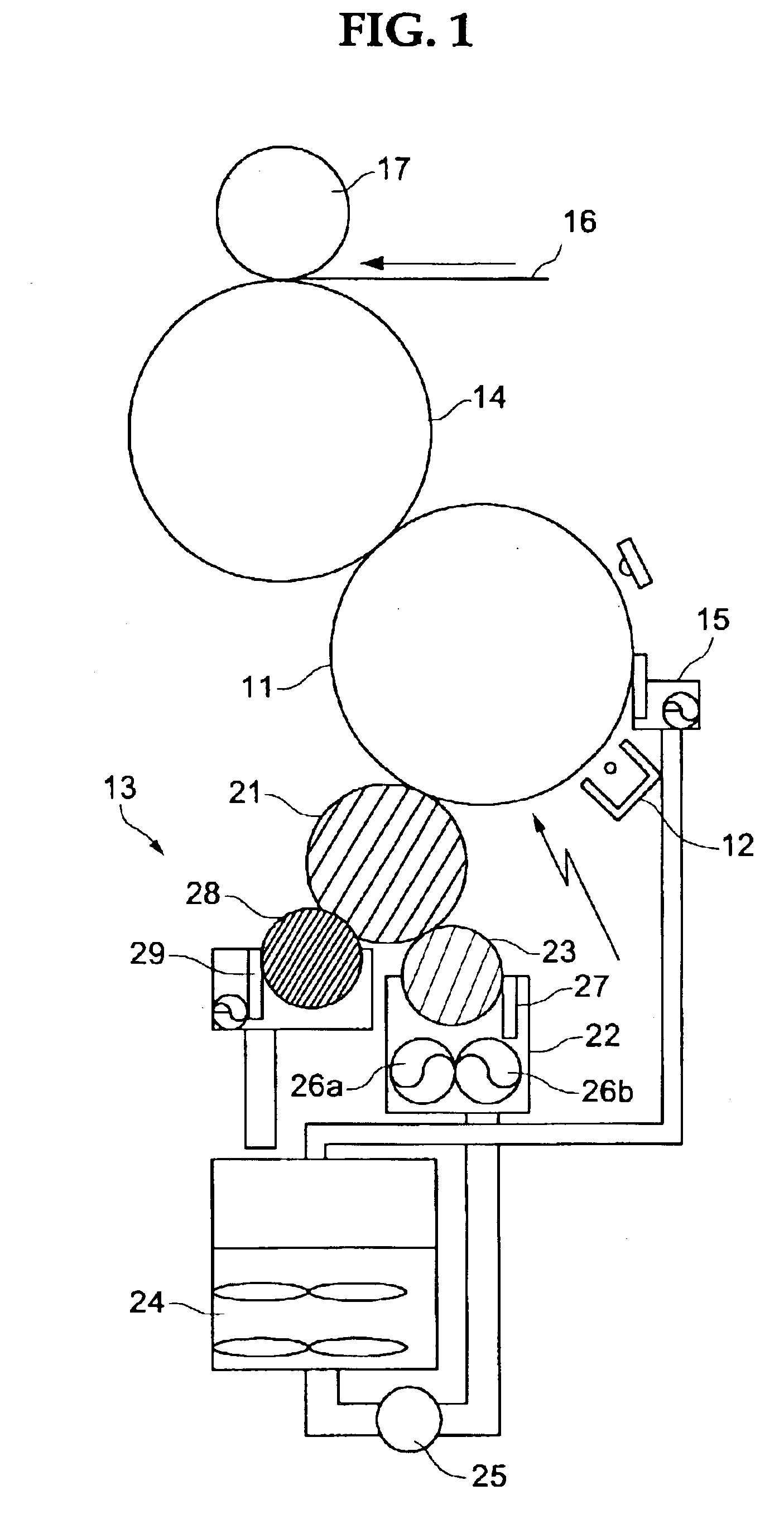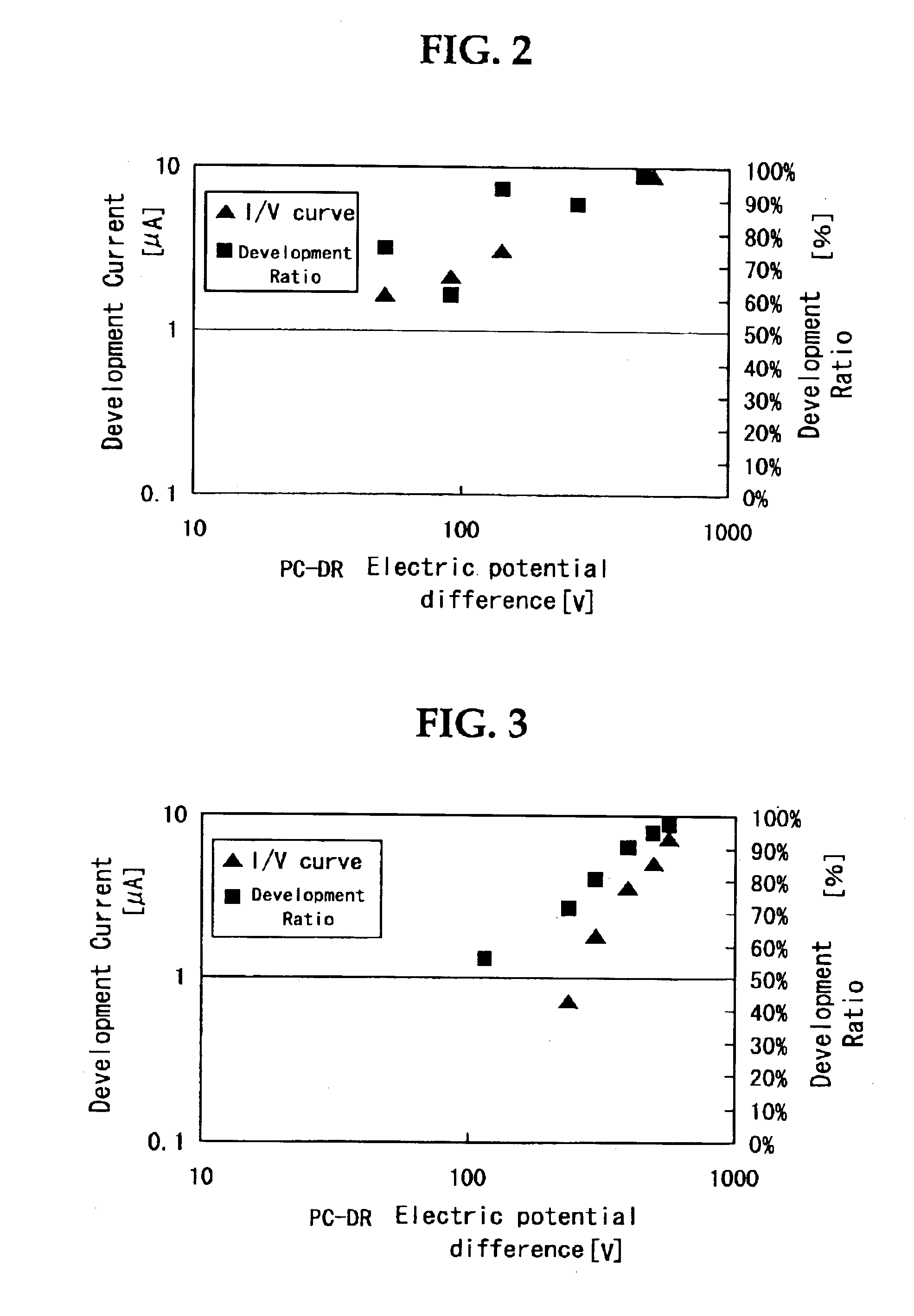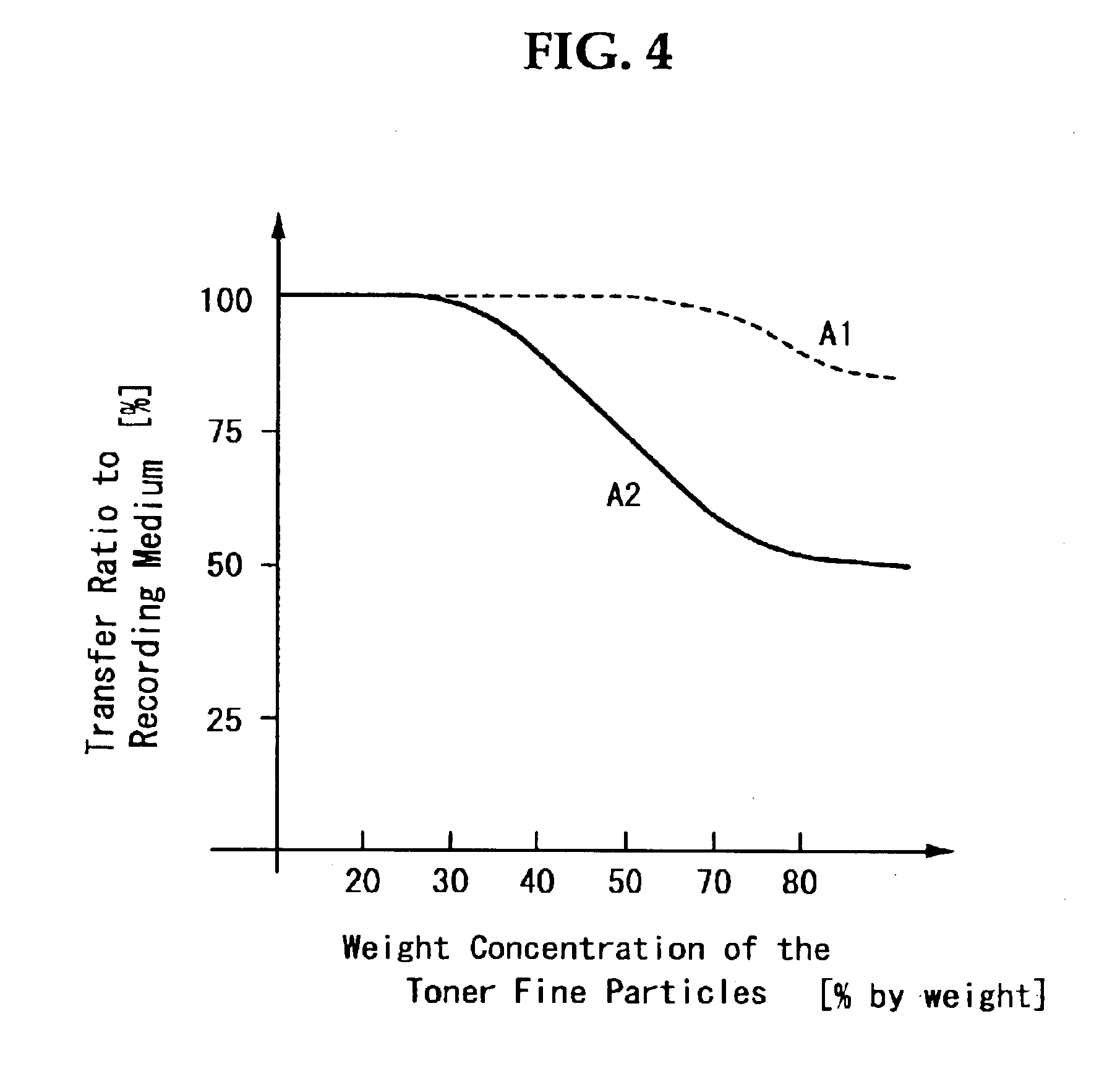Liquid developer, image-fixing apparatus using the same, and image-forming apparatus using the same
a technology of liquid developer and image fixation apparatus, which is applied in the field of liquid developer, can solve the problems of reducing the specific resistance of the dispersible dispersible, affecting the stability of the dispersed solution, and revealing certain deficiencies of the isoparaffin
- Summary
- Abstract
- Description
- Claims
- Application Information
AI Technical Summary
Benefits of technology
Problems solved by technology
Method used
Image
Examples
example 1
[0261]A liquid developer having a composition shown in TABLE 1 was prepared in the following manner.
[0262]In a reactor equipped with a thermometer and a nitrogen gas inlet tube, 180 parts by weight of dimethylsilicone, 1 part by weight of methacrylic acid, 19 parts by weight of silicone-modified with a methacryloxy group at one end, and 1 part by weight of azobisisobutyronitrile were stirred and mixed, were then treated with stirring at 85° C., were further treated with stirring under flow of nitrogen gas for 3 hours, and then at 90° C. for 2 hours so as to yield an acidic-group-containing dispersing material.
[0263]In a reactor equipped with a thermometer and a nitrogen gas inlet tube, 180 parts by weight of 1 cSt serving as dimethylsilicone, 15 parts by weight of the standard particles, 1 part by weight of dimethylaminomethyl methacrylate, and 1 part by weight of azobisvaleronitrile were stirred and mixed, were treated with stirring at 50° C. under flow of nitrogen gas for 10 hours...
example 2
[0310]In a reactor equipped with a thermometer and a nitrogen gas inlet tube, 180 parts by weight of dimethylsilicone (1 cSt), 15 parts by weight of the standard particles, 1 part by weight of dimethylaminomethyl methacrylate, 5 parts by weight of a silicone-modified with a methacryloxy group at one end, and 1 part by weight of azobisvaleronitrile were stirred, were further treated with stirring at 50° C. under flow of nitrogen gas for 10 hours, solids in the resulting reaction mixture were separated from the dimethylsilicone and thereby yielded fine particles.
[0311]To 79.5 parts by weight of a dimethylsilicone (50 cSt) as a dispersion medium, 20 parts by weight of the above-prepared fine particles, and 0.5 parts by weight of zirconium octanoate as a charge control agent were added, the resulting mixture was milled and thereby yielded a black toner B1.
example 3
[0316]In a reactor equipped with a thermometer and a nitrogen gas inlet tube, 180 parts by weight of a branched chain aliphatic hydrocarbon Isopar G (trade name, available from Exxon Mobile Corporation), 1 part by weight of methacrylic acid, 19 parts by weight of lauryl methacrylate, and 1 part by weight of azobisisobutyronitrile were placed and stirred, were further treated with stirring at 85° C. under flow of nitrogen gas for 3 hours, and then at 90° C. for 2 hours and thereby yielded an acidic-group-containing dispersing material.
[0317]In another reactor equipped with a thermometer and a nitrogen gas inlet tube, 180 parts by weight of Isopar G (trade name, available from Exxon Mobile Corporation), 15 parts by weight of the standard particles, 1 part by weight of dimethylaminomethyl methacrylate, and 1 part by weight of azobisvaleronitrile were placed and stirred, were further treated with stirring at 50° C. under flow of nitrogen gas for 10 hours, solids in the resulting reactio...
PUM
 Login to View More
Login to View More Abstract
Description
Claims
Application Information
 Login to View More
Login to View More - R&D
- Intellectual Property
- Life Sciences
- Materials
- Tech Scout
- Unparalleled Data Quality
- Higher Quality Content
- 60% Fewer Hallucinations
Browse by: Latest US Patents, China's latest patents, Technical Efficacy Thesaurus, Application Domain, Technology Topic, Popular Technical Reports.
© 2025 PatSnap. All rights reserved.Legal|Privacy policy|Modern Slavery Act Transparency Statement|Sitemap|About US| Contact US: help@patsnap.com



